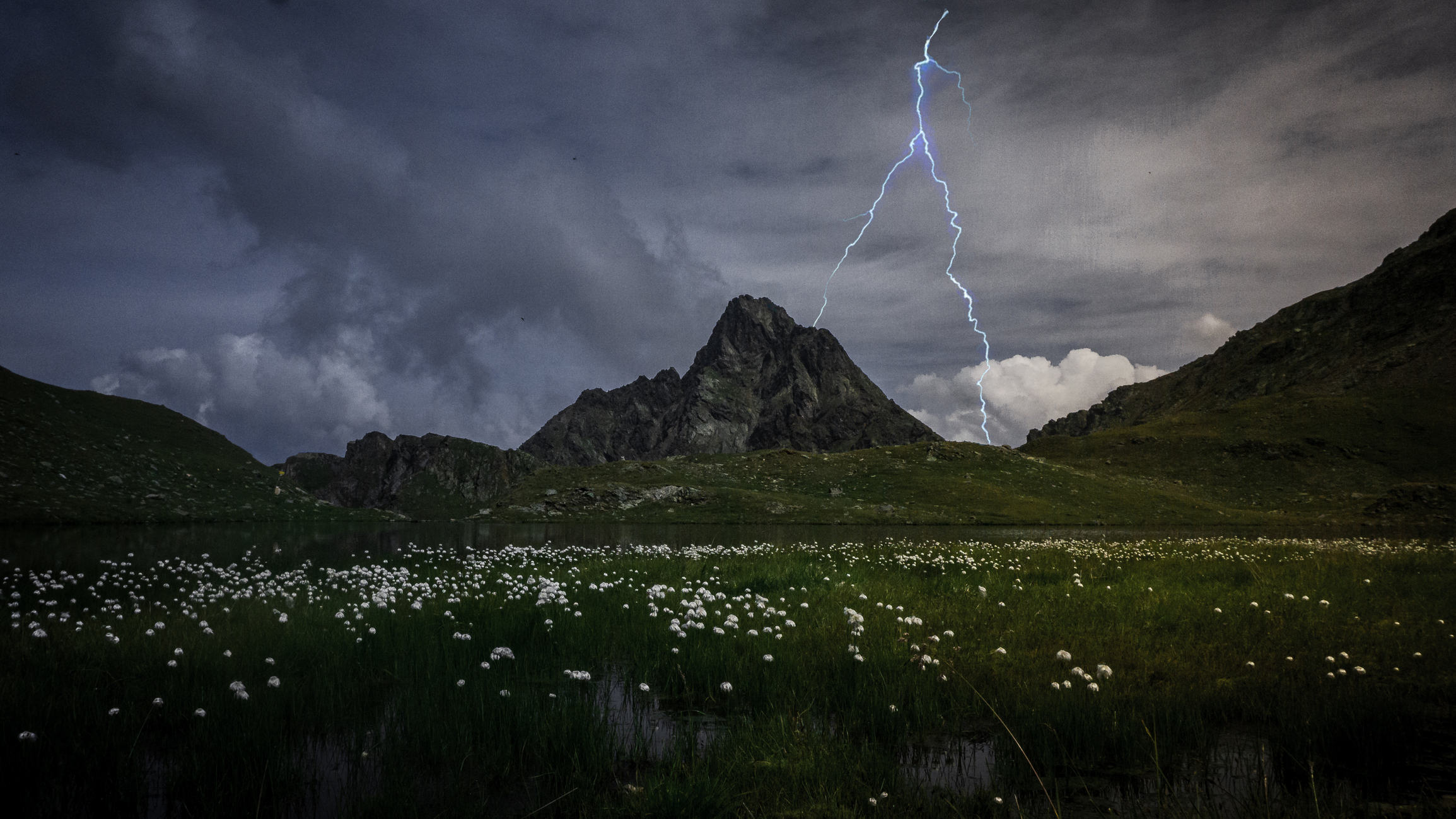

Do you know that song about catching lightning in a bottle? Well, with this space-age new tech, the idea might not be so far-fetched after all.
An international team of scientists has recently used a powerful laser to capture and divert lightning strikes. They tested the technology on one of the most lightning-prone mountains in Switzerland: Säntis mountain, an 8,200-foot peak that gets struck more than 100 times per year.
There, they deployed their three-ton laser and found it was able to alter the trajectory of a lightning strike over a distance of about 160 feet. That makes it significantly more effective than the average lighting rod, which hasn’t historically proven a reliable way to protect buildings or people from strikes. (The team reported their findings in the journal Nature Photonics.)
Videos by Outdoors with Bear Grylls
The new laser technology could open a number of possibilities for lighting prevention in the future. Each year, lightning strikes cause thousands of deaths and billions of dollars in infrastructure damage. They’re particularly a problem for people who live in lightning-prone areas like Florida or the tropics, as well as for outdoor recreationists who venture into alpine terrain, where mid-afternoon thunderstorms can be common. Climbers and hikers have been known to be injured or even killed by strikes.
The lasers used in the experiment are extremely powerful. They work by firing a series of intense, vertical pulses, which are hot enough to rapidly heat air molecules, creating a stream of air that’s both less dense and more electrically conductive than the air around it. Because lightning usually follows the path of least resistance, it tends to funnel directly into this newly created channel. Essentially, the scientists were able to lay a trap for the lightning—and it fell for it every time.
While the new technology won’t be available commercially any time soon, it raises a number of questions about what the future of lightning strike prevention could look like. Tall buildings and precious monuments—like the Statue of Liberty—might one day be equipped with lasers that can be strategically deployed during lightning storms. In the far future, maybe hikers will carry pocket-size versions into the mountains as part of their standard kit.
That kind of portability may be a long way off, but, hey—it never hurts to dream.









